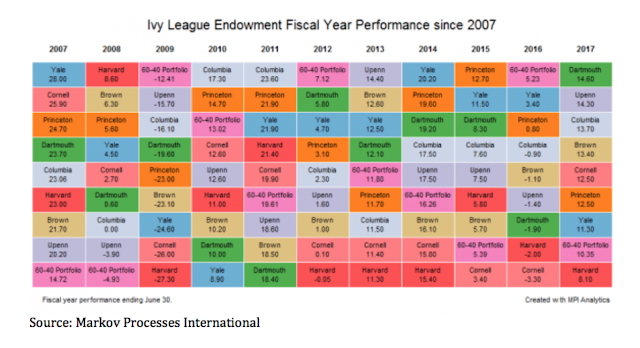Managed futures have unique features given that margin is only a small potion of the total investment. This allows for active collateral management in ways that are more impactful from other hedge funds. For most hedge funds that use a prime broker and make long/short equity investments, the focus of collateral management is with reducing the cost of borrowing. For futures, the leverage is not through borrowing but through the ability to increase notional funding based on the level of margin to equity. A good portion of funds given to any CTA is not managed efficiently but rather just held in cash.
Surprisingly, there has been reluctance by managers to actively invest collateral. There is the view that the investment should be "pure trading" through futures, yet the trading strategy may compete against investments that have an inherently longer duration than cash. The management of collateral can be a form of value-added management that effectively reduces the cost of the fund management.
The cash rate have moved higher with 3-month Treasuries up 76 bps since the beginning of the year so funds have gained on nice tailwind with their performance even if cash return is not included in the performance fee.
A simple look at yields even along the short-end of the curve will show the potential for value creation. The difference between 4-week and 1-year Treasury bills is currently 46 bps. The difference between 1-month and 12-month LIBOR is 61 bps. The difference between 15-day and 180-day high quality commercial paper is 37 bps. Just taking some extra duration risk or extra credit risk can significantly defray management fees without significantly impacting funds risks. Better cash management is all the more important for lower fee funds.
Active cash management can control for inflows and outflows and rate changes, but in a higher rate environment, the opportunities for improvement are significantly better. Better cash management is an effective tool for CTA's in the world of higher Fed target rates.
The cash rate have moved higher with 3-month Treasuries up 76 bps since the beginning of the year so funds have gained on nice tailwind with their performance even if cash return is not included in the performance fee.
A simple look at yields even along the short-end of the curve will show the potential for value creation. The difference between 4-week and 1-year Treasury bills is currently 46 bps. The difference between 1-month and 12-month LIBOR is 61 bps. The difference between 15-day and 180-day high quality commercial paper is 37 bps. Just taking some extra duration risk or extra credit risk can significantly defray management fees without significantly impacting funds risks. Better cash management is all the more important for lower fee funds.
Active cash management can control for inflows and outflows and rate changes, but in a higher rate environment, the opportunities for improvement are significantly better. Better cash management is an effective tool for CTA's in the world of higher Fed target rates.







































